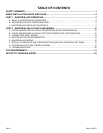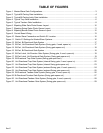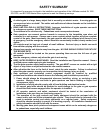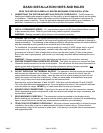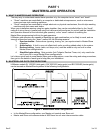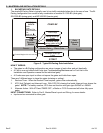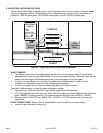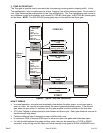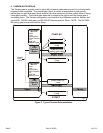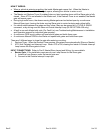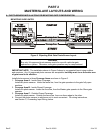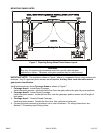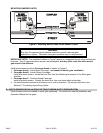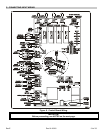
Rev E Doc 01-20201 3 of 33
PART 1
MASTER/SLAVE OPERATION
A. WHAT IS MASTER/SLAVE OPERATION?
The easy way to understand master/slave operation is by the computer terms “smart” and “dumb”.
• “Smart” machines are controlled by a computer or dedicated microprocessor, such as microwave
ovens and new-style washing machines.
• “Dumb” machines are controlled by simple electronic or physical mechanisms, like old-style washing
machines with their cams and timers.
When your installation requires using two gates together, they can be controlled either by the “dumb”
method of wiring them in parallel and using limit cams and reclose timers for control (see the Installation
and Operation manual for the individual gate operator), or the “smart” method of enabling the
Master/Slave programming built into the gate operators.
LiftMaster gate operators are capable of handling any gate combination you’re likely to need, and we
strongly recommend using the “smart” method for the following reasons:
1. Synchronization: Gate actions (opening, closing, etc.) are synchronized in Master/Slave
operation.
2. Added safety: A fault in one unit affects both units, providing added safety to the system.
3. Reduced wiring: Inputs (radio, exit loops, etc.) need be wired to only one unit in some
Master/Slave configurations.
4. Simplified gate setting: Gate controls (Anti-Tailgate, Reclose Timer, etc.) only need to be
set in one unit in some Master/Slave configurations.
Let’s take a quick look at some Master/Slave gate configurations, cover the wiring and setup procedures,
then go into the details of each type to help plan your installation.
B. MASTER/SLAVE GATE CONFIGURATIONS
LiftMaster models SL 1000-B3 (slide gate), SW 2000-B3 (swing gate), and BG 3000-B3 (barrier gate)
can be teamed as Master/Slave systems in the following configurations:
Figure 1. Master/Slave Gate Configurations.
• In the Master/Slave configuration, one Master unit controls one Slave unit.
• Master and Slave units communicate at 9600 baud via a 4-wire interconnection cable.




